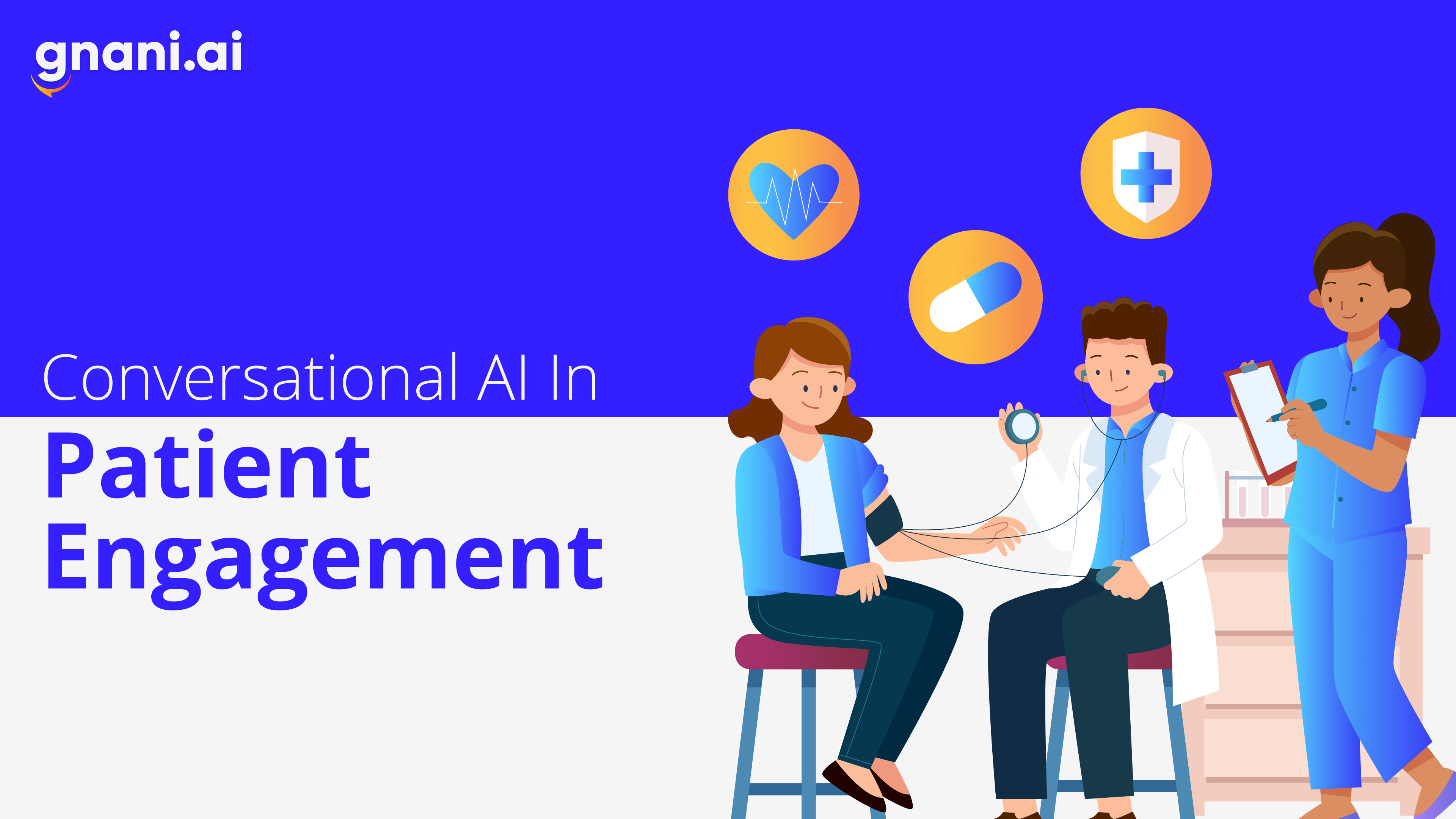In our last blog post Future Of Healthcare And Patient Engagement Platforms, we have seen how the patient engagement platform is helping healthcare professionals deliver better care to their patients and what patients really expect from a patient engagement platform.
In this one, let us see how Conversational AI has the ability to make patient engagement platforms even more accessible for the patients.
Voice AI To Maximize Engagement
Voice AI is an AI-based automation interface that can provide a human-like conversational experience to the user. It uses Speech Recognition and Natural Language Processing (NLP) to clearly understand what the user speaks and deliver a prompt reply in a natural conversational manner.
New-age healthcare platforms are today cashing on Voice AI to deliver an empathetic and harmonic experience to users.
Why Conversational AI In Patient Engagement Is Important?
Based on the research of Frost & Sullivan, integrating conversational AI agents in hospitals will decrease the cost of treatment by 50% and increase outcomes by 30-40%.
Imagine a scenario where all non-medical clerical activities can be automated so that the doctors and health care professionals have more time to focus on patient care. To get a clear picture, let us make an approximate calculation based on the actual facts.
In the US, a Physician works nearly 80 hours a week. According to a report, a professional spends 18 minutes of his/her time locating a document alone.
I.e., 18(mins) x 6(days) = 1hour and 48 minutes per week!
An in-depth survey by PatientPop has revealed interesting facts. One critical piece of information to which we need to pay attention is “each appointment booking call requires an average of 4 minutes.”
If a staff handles 100 appointment booking calls, he/she will be spending nearly —
100 X 4 minutes =7 hours (approx).
From a financial perspective, for booking and managing files alone, a healthcare organization will be roughly losing $35000 per year.
From a patient perspective, a patient has to spend nearly 8 minutes on a call to book an appointment and 30% of the time goes on hold; resulting in a frustrating experience.
Conversational AI in patient engagement can save hours and hours of time and thousands of dollars for healthcare organizations by automating all the mundane tasks.
Multilingual & Multifaceted Voice bots For Healthcare
assist365™ is a multilingual conversational AI bot that can handle more than 20 languages. The solution can be deployed on multiple channels like Telephony, Chat, IVR, and others.
Being an AI-assisted voice bot, it can handle interactions 24/7. As a result, a healthcare organization can deliver better patient engagement and manage appointments, schedules, and reminders. As we have already seen in our previous Future of Healthcare & Patient engagement platform post, the two crucial points that a patient expects in a patient engagement platform are quality and data security.
With the help of Voice Biometrics, customer data can be safeguarded and can be easily accessed by the appropriate person. A doctor or a patient can access their file with their voice.
From a wide range of features like automated voice bots, deeper analytics, voice biometrics, assist365™ will help you take patient engagement to the next level. Request a demo to experience the AI-powered patient engagement.
Frequently Asked Questions
Does AI improve patient outcomes?
And advanced technology platforms leveraging forms of artificial intelligence (AI) are well-positioned to support and increase the productivity of health care providers while improving patient outcomes with the ability to identify those at most risk.
What is an example of artificial intelligence in healthcare?
Precision medicine is one of the most valuable examples of AI in healthcare.
How can AI change the future of healthcare?
The future of AI in health care could include tasks that range from simple to complex—everything from answering the phone to medical record review, population health trending and analytics, therapeutic drug and device design, reading radiology images, and making clinical diagnoses and treatment plans.


